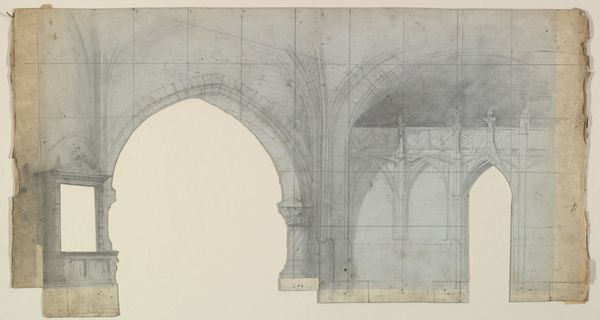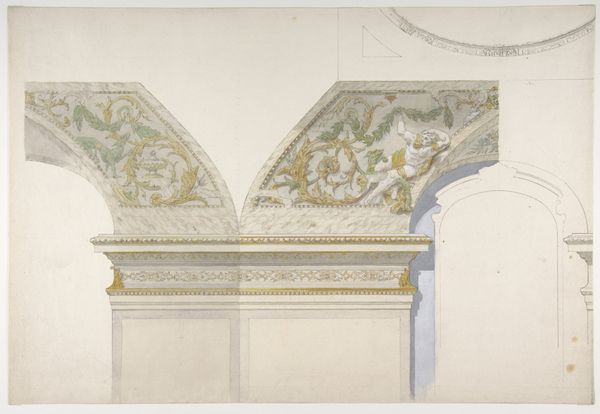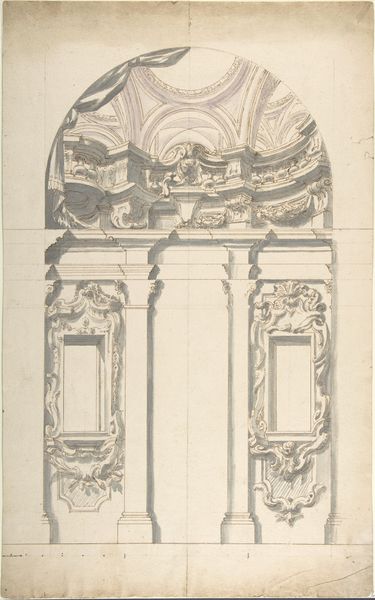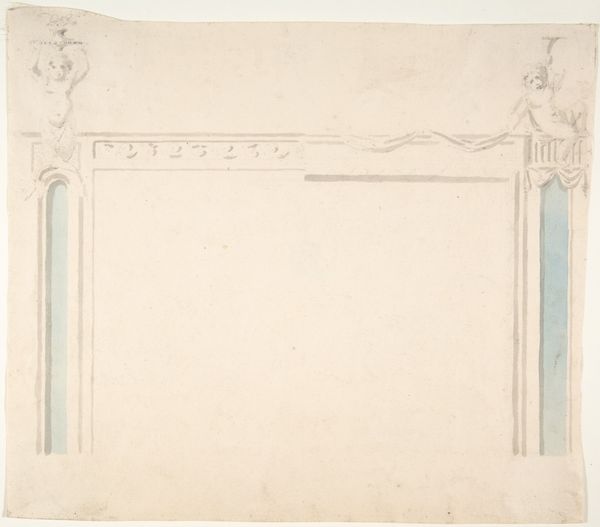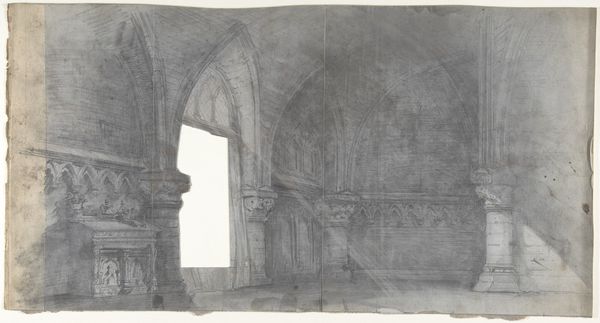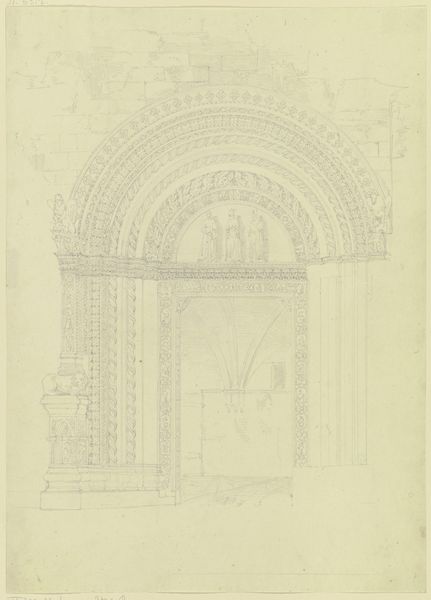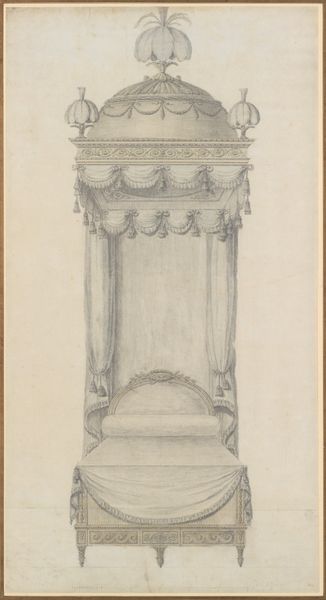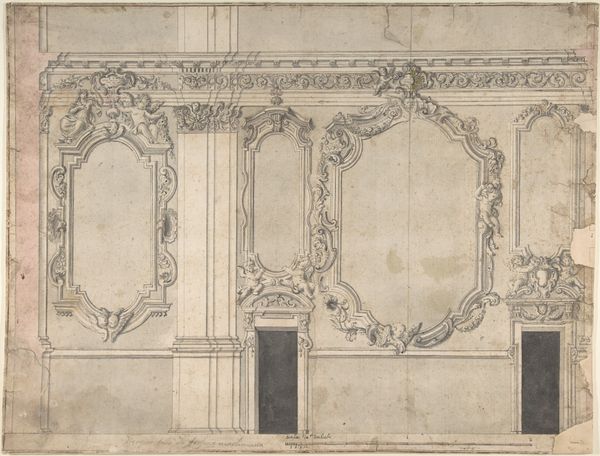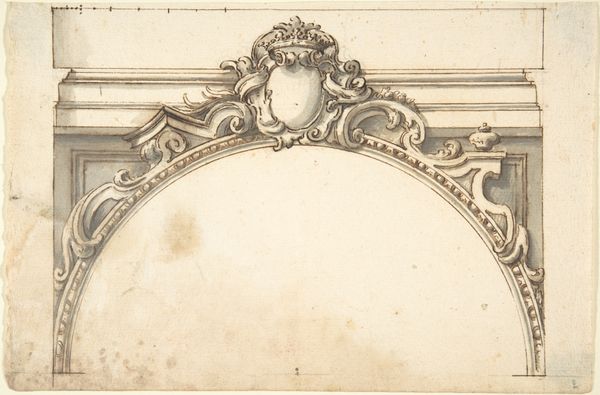
Copyright: Public Domain
Curator: Here we have Eugène Cicéri's "Design for a Stage Set," created sometime between 1830 and 1890. It's currently residing here at the Met. A drawing using charcoal, pencil, and pen. What's your initial take on this, given your particular sensibilities? Editor: Immediately, a sense of dramatic anticipation, like the prelude to a grand, yet unseen story. The archway frames emptiness, begging for narrative. Is it a proscenium arch waiting for players? Curator: Indeed, "waiting" is the key word. This work encapsulates a crucial part of 19th-century theater production, before computer-aided design took hold. Consider the labor involved in such a detailed, large-scale drawing—the charcoal dust, the precise linework. This wasn’t simply aesthetic creation; it was a technical blueprint intended to guide the scenic carpenters, the stagehands. This piece is about more than what the audience will see, but about how they see it. Editor: The materiality draws me in— the layered textures from various drawings: soft charcoal merging with assertive lines of ink to convey weight, volume. I envision a set carpenter leaning over blueprints in a dim workspace, bathed in gaslight, trying to reconstruct Cicero's ephemeral idea into something structurally sound. Tell me—did this stage set serve a specific production? I can see ghosts moving within those outlines, each bringing life into existence under arch's heavy expectations! Curator: Not much can be confirmed regarding its application in particular stage production. Yet, within lies an invitation to critically assess this framework itself! Was performance restricted because it involved hierarchical organizations of production. Could such division create limitations around artistic process or theatrical expression overall since so many actors must contribute effectively while retaining unique vision Editor: I concur! The constraints might have triggered imagination as effectively as the freedom. Sometimes artistic gold gets wrought under pressure like heat turns stone diamonds right Curator, Curator: Agreed. A drawing seemingly highlighting art’s framework exposes questions on what is artistic output’s underlying base or foundational context - a social construction reflecting divisions regarding social responsibility where skilled labour and craft were often placed below an individuals artistry alone instead of mutual contributors involved creatively alongside them collectively
Comments
No comments
Be the first to comment and join the conversation on the ultimate creative platform.

